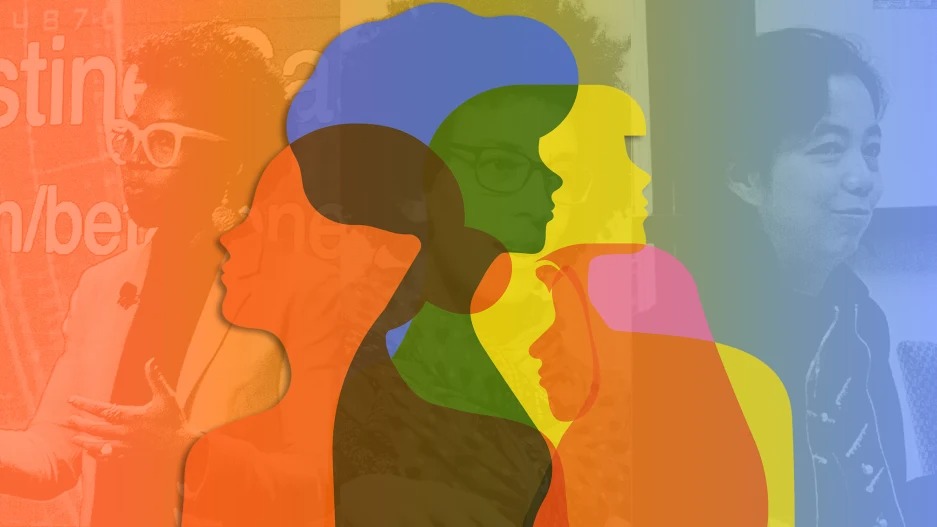- | 8:00 am
3 reasons why the future of AI relies on women
Cindy Gallop maintains, “When you welcome and fund our use cases, they solve for the problems and show the world the benefits of AI.”

Over the past few weeks, the OpenAI saga has played out in ways all too familiar to women in AI and tech. Sam Altman’s ousting from OpenAI and rapid return based on a tsunami of public Silicon Valley power broker support, reinforced his white male god-like status without questioning exactly what lay behind the ousting and what future guardrails for safety might be necessary.
The reconstituted OpenAI board doubled down on the concept that “only white men get AI,” while J. Edward Moreno’s ill-informed New York Times article “Who’s Who Behind The Dawn Of The Modern AI Movement” erased women completely from its history.
Outraged women recommended many brilliant women for both the Board and the article, such as Fei-Fei Li, Safiya Noble, Timnit Gebru, Joy Buolamwini, Deb Raji, Margaret Mitchell, and Kate Crawford. Neither board nor article have yet been updated.
It’s clear that the powerful, wealthy men currently dominating AI have no intention of welcoming, listening to, funding, and working with women leaders, founders, technologists, and scientists whose views are not completely aligned with and preferably subordinate to theirs.
What will it take to get them to do so? Especially to invest, because as with every other tech sector, the only thing holding women in AI back is lack of access to capital.
Investor Jason Calacanis claims there is “unlimited venture capital for any winning AI startup (defined as a startup that can get to $500,000 in revenue), with reasonable gross margins and burn.” With only 1.7% of all venture capital going to female founders last year, we know that doesn’t include us.
I’ve spent 38 years working in advertising—that is, in the business of getting people to do things they originally had no intention of doing.
Four years ago, I spoke at the 3 Percent Conference (so-called because it was started by Kat Gordon in 2012 when only 3% of all advertising industry creative directors were women, a statistic Gordon has helped grow to 29%). My talk on “The Future For White Men In Advertising” laid out seven ways white men benefit directly themselves from embracing DEI, including:
- You’ll be safer
- You’ll be richer
- You’ll be able to make jokes about sex in the office
Now I believe the power brokers should welcome the intersectional female lens on AI because of their two biggest motivators: self-interest and capitalism.
WOMEN BRING SAFETY
In my Fast Company open letter Dear Prince Harry: There’s A Simple Solution To Design Safer, More Inclusive Social Media I made this point:
“The young white male founders of the giant tech platforms that dominate our lives today are not the primary targets (online or offline) of harassment, abuse, racism, sexual assault, violence, rape, revenge porn. So they didn’t, and they don’t, proactively design for the prevention of any of those things. Those of us who are at risk every single day—women, Black people, people of color, LGBTQ, disabled—design safe spaces, and safe experiences.”
I designed my own business, MakeLoveNotPorn, to be the safest place on the internet, because there’s no self-publishing of anything. We’re tiny and bootstrapping, yet we’ve human-curated everything for 11 years, and our model is eminently scalable. Safety on the internet isn’t a matter of viability; it’s a matter of will.
Women have seen how the current state of AI makes us all unsafe for years. When you welcome and fund our designs for AI safety, we can help eradicate the concerns you feel are holding you back.
WOMEN BUILD USE CASES THE WORLD EMBRACES
The glorious future of AI the power brokers envisage requires the entire world to welcome and use it. The founders representing 50% of the population find different use cases for AI—ones that solve problems we care about.
Women are building AI businesses to transform healthcare, predict and monitor natural disasters, create sustainable global food systems—and in my case, to tackle the problems AI itself causes.
In her Yale Law Journal paper The Continued (In)visibility of Cyber Gender Abuse Danielle Keats Citron highlights the rapid spread of AI deepfakes that target and harm women specifically:
“AI programs now enable anyone to turn a photo of a clothed woman into an altered version where she is naked. I’m using the pronoun “she” deliberately, because the program only works to turn photographs of people into photos of naked women. (If you submit a photo of a man or an inanimate object, it will be transformed to include breasts and female genitalia.)”
I’ve had a not-yet-funded MakeLoveNotPorn AI product in the pipeline for years, born of our unique access to a human-curated Large Video Model of fully consensual real world sex, that would enable us to build an algorithm for consent. It’s AI that helps end rape culture instead of perpetuating it. When you welcome and fund our use cases, they solve for the problems and show the world the benefits of AI.
WOMEN MAKE AI MAKE MORE MONEY
Did I mention my background is in advertising? We are the business model for the internet—for expensive-to-develop-and-operate AI as much as everything else.
The two key words for turbocharging ad revenue? Brand. Safety. When you welcome and fund our solutions for safety and social benefit to deliver the advertisers’ Holy Grail, you will make even more money than you dream of right now.
Now that’s effective accelerationism.
/c







































